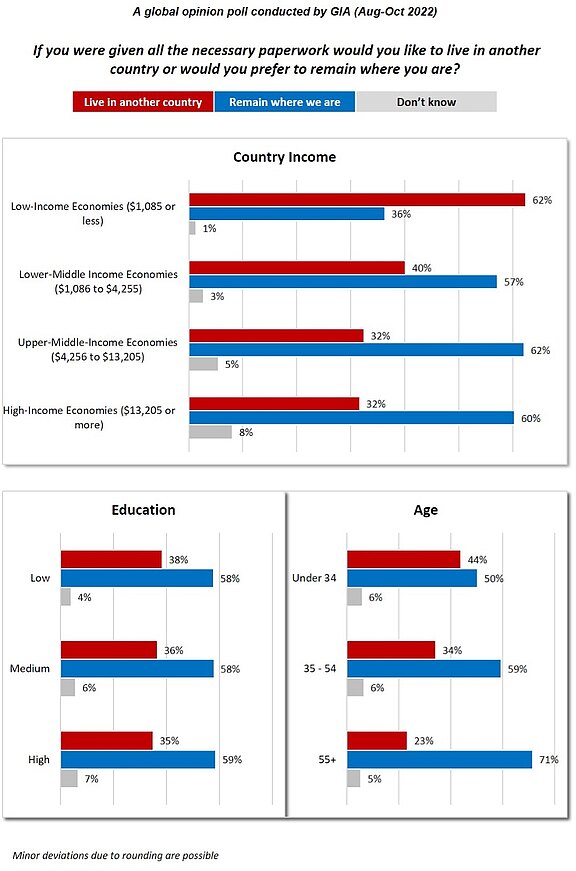This is the result of an opinion poll conducted by GIA in 57 countries covering about two thirds of the global population (and about 90% of those countries which are free to conduct and publish opinion research).
36% of global citizens said yes when asked „If you were given all the necessary paperwork, would you like to live in another country or would you prefer to remain where you are?“, 59% answered they would like to stay where they are and remaining did not answer the question.
Younger population significantly more eager to leave their current country. Almost one in two (44%) young people surveyed (those below age 34) said if given the option they would like to live in another country. The figure for young was almost 8 points higher than the average and 21 points higher than older respondents (classified as those above age 55) of which only 23% said they would like to live elsewhere.
Lower Income country respondents significantly more likely to express motivation to emigrate. 62% of respondents surveyed in low-income countries (those classified by World Bank as earning less than 1085 USD per year or less) expressed motivation to live in another country. The motivation seems to drop as the country one lives in prospers. Among high income countries the motivation to migrate was found to be around 32% (half that of the poorest countries).
The analysis reveals that respondents’ own income, education or occupation profile makes little difference in willingness or motivation to migrate. The general income of the country had a significant implication, however in this regard.
Among different regions of the world, willingness to migrate to another country was found to be highest in Sub Saharan Africa (where 56% of respondents surveyed expressed their wish to migrate to another country). This was followed by Latin America (54%). The lowest willingness to migrate was found in South Asia.
Top countries in terms of willingness to migrate were: Sierra Leone (84%), Ghana (81%) and Nigeria (71%). Lowest willingness was registered in India (4%), Vietnam (8%), Japan (14%), etc.





